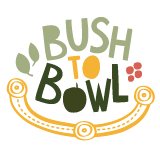






Bushtucker Kit x 6 Native Bushtucker Plants
Pickup available at Ingleside
Usually ready in 2-4 days

Bushtucker Kit x 6 Native Bushtucker Plants
Ingleside
12 Wilga Street
Ingleside NSW 2101
Australia
1. Midyim Berry - Austromyrtus variety. - mouth watering berry which is described as small marshmallow balls.Uses: Native to the Sydney area and locally sourced for you to add to your favourite desert or sweet. Eat straight from the plant, add to a fruit salad or jam. This shrub is a low spreading plant and enjoys part sun and shade.
2. Native Basil - Plectranthra. A coastal plant found along the East coat of Australia. It produces a beautiful purple flower that the native bees love but alos creates a great ecosystem for small insects and lizards.
Uses: as substitute for the non native version in cooking or in a salad.
3. Native Thyme - Prostanthera thyme aka minty. There are too many varieties to mention but found all through out Australia they come with orgegano, rosemary and thyme undertones. Works great as hedging and potted. Uses: Who doesn’t love the taste of mint in a refreshing drink or the refreshing smell around the house. Use as a replacement for thyme in your cooking.
4. Cinnamon myrtle - Backhousia myrtifolia. Found along east coast of Australia this plant is prized for its aromatic leaves and unique flavour. This evergreen shrub showcases dense foliage of glossy green leaves and releases a delightful cinnamon-like scent when touched. With its captivating fragrance and culinary versatility, the Cinnamon Myrtle is a wonderful addition to any garden or herb collection.
Uses: alternative to cinnamon in sweet and savoury dishes.
5. Coastal Pigface - Carpobrotus. A coastal ground cover plant with an edible fruit and leaves. Easy to grow plant for the hardiest of conditions. A sweet and sour fruit enjoyed in the warmer months.
Uses: eat the fruit when it roped in summer. The leaves can be used and p applied to burns and bites. Additionally, they can be eaten by adding them to a salad.
6. Saltbush - Atriplex nummuleria this plant naturally draw saline from the soil and then found in the leaves. With up to 10% protein in the leaves this make this plant a superfood. Eat fresh in your foods as a salt substitute or dry them out and use in your salt grinder. Add pepper berry and you have the ultimate alternative.
Planting and plant care instructions.
Here are five key points for planting a native plant guide and some basic instructions:
Prepare the planting area: Clear the planting area of any weeds, grass, or debris. Loosen the soil using a garden fork or tiller to promote healthy root growth. Remove any rocks, roots, or large clumps of soil that may hinder proper plant development.
Amend the soil if necessary: If needed, amend the soil with organic matter, such as compost or well-rotted manure, to improve drainage and fertility.
Dig the planting hole: Dig a hole that is slightly wider and deeper than the plant's root ball or container. Gently remove the plant from its container, being careful not to damage the roots. Place the plant in the hole, ensuring that it sits at the same depth as it was in the container.
Backfill and water: Fill the hole with soil, gently patting it down around the plant to eliminate air pockets. Water thoroughly to settle the soil and ensure good root-to-soil contact. Apply a layer of mulch around the base of the plant to help retain moisture, regulate temperature, and suppress weeds.
Provide ongoing care: Native plants often require minimal maintenance once established, but regular watering, especially during the first year, is crucial for their survival. Monitor the soil moisture, and water as needed, focusing on the plant's root zone.
*Please note: if a plant is out of stock we will use our discretion to change the plants after we make contact with you about the change.


